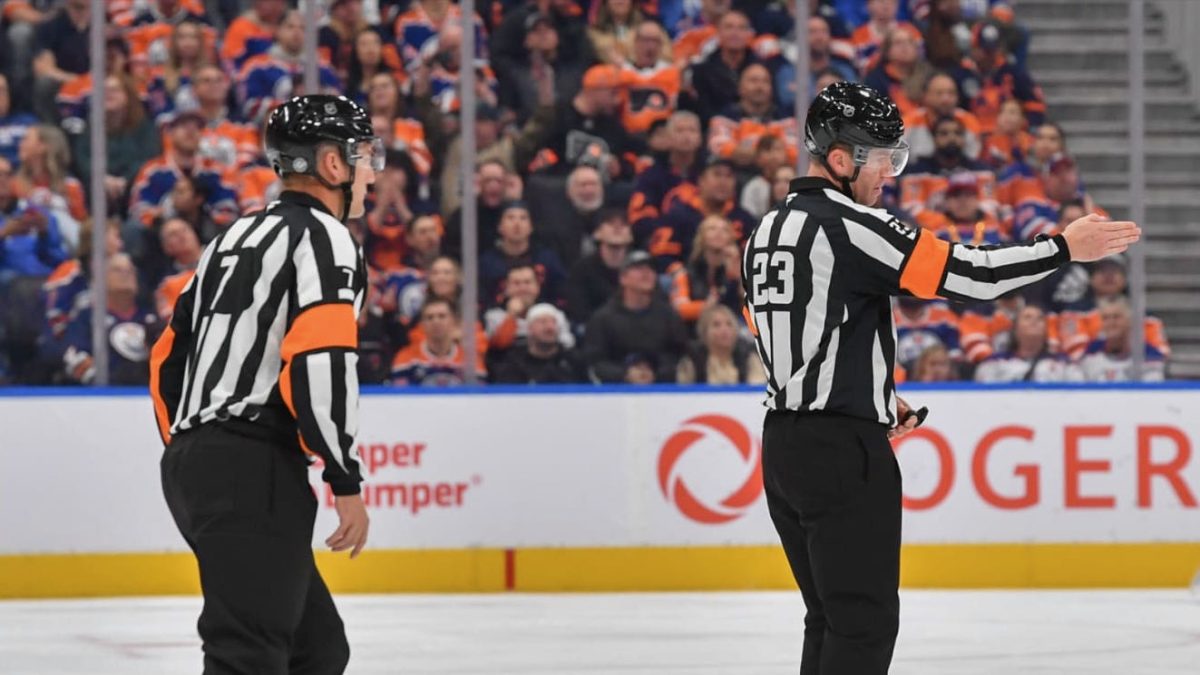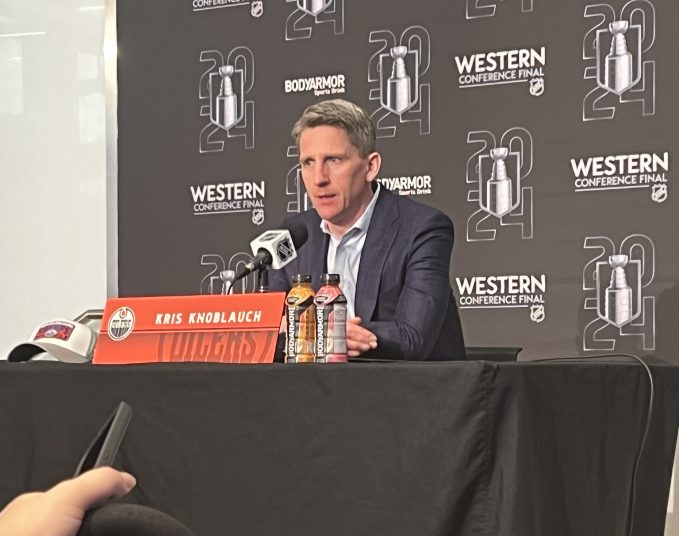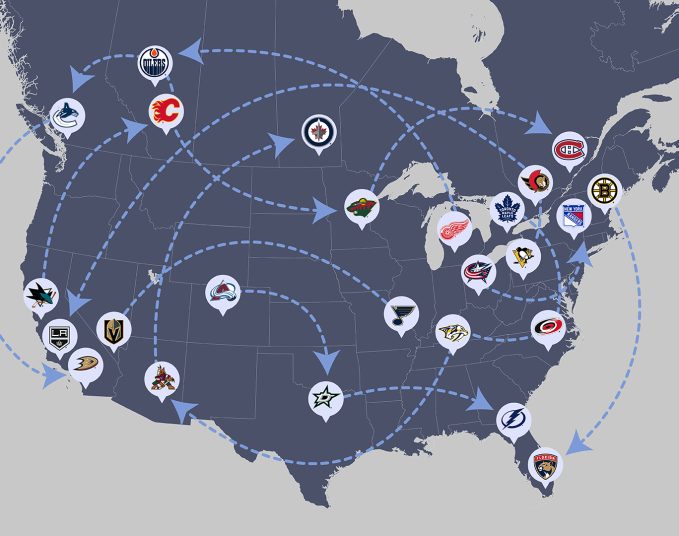Before getting into the nitty-gritty, I am going to state up front that, in many ways, I think the introduction of technology to help referees is a good thing. In fact, I own some shares in Genius Sports, which, as part of its business, creates technology to help officials.
I like it so much, I bought the company. (OK, a very, very, very small part of the company.)
But, like any tool, it’s only as good as the people operating it. And that brings us to several incidents that have Oilers fans scratching their heads — just five games into the regular season.
The games have been littered with reviews, coach’s challenges, coach’s challenges after reviews — and decisions that aren’t crystal clear. And that’s the problem. When technology was first introduced in sports like tennis and soccer, the mandate was clear — it was there to help correct “clear and obvious” errors.
But that’s not what’s happening now. There are extended delays in hockey, football, soccer… really any sport that’s got replay technology. “Clear and obvious” has given way to “let’s look at this from 14 different angles, try to determine what was going on in the forward’s head, try to determine if the goalie is embellishing contact, and wait, here’s another angle.”
This week, we saw the Oilers think they scored on two separate occasions against Calgary, and both were waved off. One was a pretty cut-and-dried offside decision against Viktor Arvidsson, which was detected by replay. But, the other, a determination that Corey Perry had impeded Flames goalie Dan Vladar in the process of tipping a puck into the net, well that one took eons to figure out. The league eventually made this statement: “Video review determined Edmonton’s Corey Perry had a significant presence in the crease which impaired Dan Vladar’s ability to play his position prior to his goal.”
On Tuesday against the Flyers, replay was used twice — on the same goal. Flyer’s rookie Matvei Michkov jammed a puck just over the goal line. First replay? To check that the puck crossed the line (good.) And then came the challenge from Oilers coach Kris Knoblauch; the claim was that Michkov used his stick to move goalie Stuart Skinner’s pad ever so slightly, giving him an angle to jam that puck across the line. After a lengthy review, the goal was allowed to stand — even though, just a couple of hours before, a similar play led to a disallowed goal in a game between Vancouver and Tampa Bay.
“I saw the goal that got disallowed in the Vancouver game,” Knoblauch said. “I thought that was very similar.”
In fact, he said he’s not even sure what constitutes goaltender interference anymore.
“They make their decision, we’ll move on. I know there will be some communication. I’m sure [Oilers general manager Stan Bowman] will get some clarity on that.”
(This writer believes that both goals should have stood.)
How do replays affect the game? The puck drop was a few minutes after 8 p.m., local time. Regulation time ended at 11:03 p.m. It took about three hours to play three periods of hockey. (And then came the overtime).
Between Oct 9-15, there have been 14 coach’s challenges. Ten of those led to potential goals being wiped off the board.
And this is the thing. Replays are an absolute help when it comes to determining offside (in both soccer and hockey) and if goals/pucks crossed the line. I used to harp about how nit-picking over being an inch offside, which can be detected by the replay official, wasn’t really in the spirit of the game. But, a while back, I spoke with a decorated international soccer ref and he told me that the rule book doesn’t specify that you can be “kind of” offside. Either you are or you aren’t — and it doesn’t matter if it’s by five body lengths or the width of a hair. And he’s changed my mind on that.
But where replay is failing is when it takes a long time to come up with an answer on why the call on the field, or on the ice, should stand or be overturned. The “clear and obvious” standard has gone out the window.
The thing is, if it takes 10 camera angles and multiple viewings to make a determination, we’re dealing with grey area, and the officials’ initial call should stand.
How can the NHL do this? Put a time limit on reviews. When the refs call the the control room in Toronto, two minutes is all that’s needed to make a decision. After those two minutes are up, if no clear decision can be made, the initial call stands. If it takes longer than two minutes to make a call, it’s clear that we’re into interpretation mode, and that’s not why we use replay in the first place.
Excuse me, I just have to go check Genius Sports’ stock price.
Savvy AF. Blunt AF. Edmonton AF.




